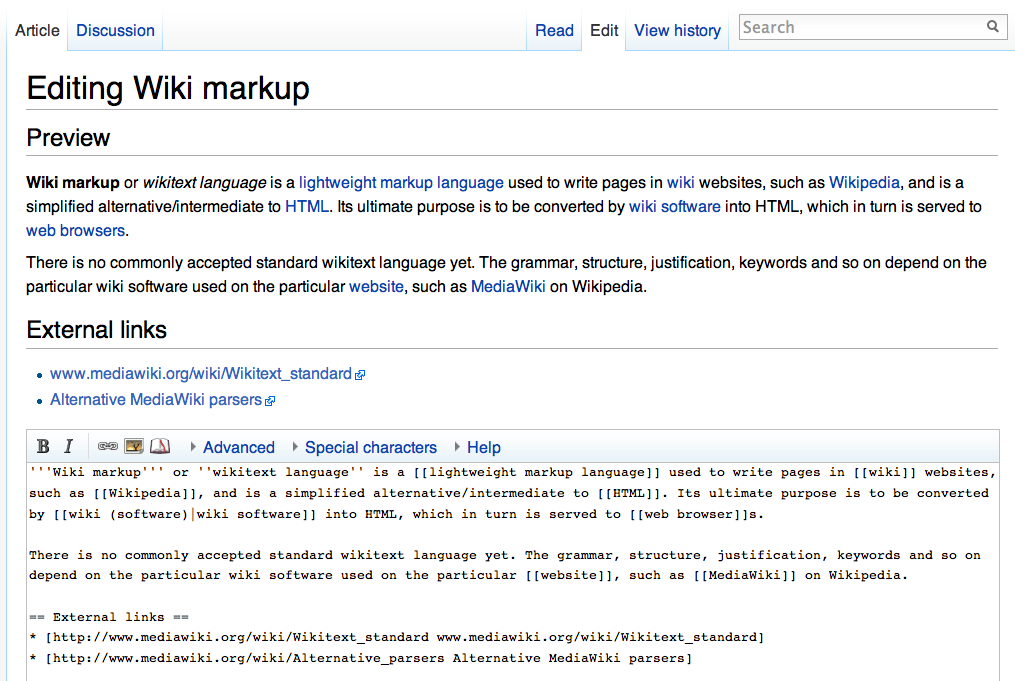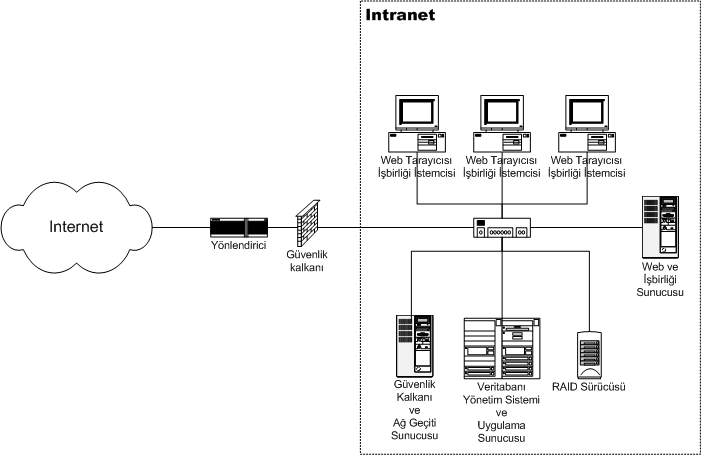|
Microsoft SharePoint
SharePoint is a collection of enterprise content management and knowledge management tools developed by Microsoft. Launched in 2001, it was initially bundled with Windows Server as Windows SharePoint Server, then renamed to Microsoft Office SharePoint Server, and then finally renamed to SharePoint. It is provided as part of Microsoft 365, but can also be configured to run as on-premises software. According to Microsoft, SharePoint had over 200 million users. Application The most common uses of SharePoint include: Enterprise content and document management SharePoint allows for storage, retrieval, searching, archiving, tracking, management, and reporting on electronic documents and records. Many of the functions in this product are designed around various legal, information management, and process requirements in organizations. SharePoint also provides search and 'graph' functionality. SharePoint's integration with Microsoft Windows and Microsoft 365 (previously known as ... [...More Info...] [...Related Items...] OR: [Wikipedia] [Google] [Baidu] |
Microsoft Corporation
Microsoft Corporation is an American multinational corporation and technology company, technology conglomerate headquartered in Redmond, Washington. Founded in 1975, the company became influential in the History of personal computers#The early 1980s and home computers, rise of personal computers through software like Windows, and the company has since expanded to Internet services, cloud computing, video gaming and other fields. Microsoft is the List of the largest software companies, largest software maker, one of the Trillion-dollar company, most valuable public U.S. companies, and one of the List of most valuable brands, most valuable brands globally. Microsoft was founded by Bill Gates and Paul Allen to develop and sell BASIC interpreters for the Altair 8800. It rose to dominate the personal computer operating system market with MS-DOS in the mid-1980s, followed by Windows. During the 41 years from 1980 to 2021 Microsoft released 9 versions of MS-DOS with a median frequen ... [...More Info...] [...Related Items...] OR: [Wikipedia] [Google] [Baidu] |
On-premises Software
On-premises software (abbreviated to on-prem, and often written as "on-premise") is installed and runs on computers on the premises of the person or organization using the software, rather than at a remote facility such as a server farm or cloud. On-premises software is sometimes referred to as " shrinkwrap" software, and off-premises software is commonly called "software as a service" ("SaaS") or "cloud computing". The software consists of database and modules that are combined to particularly serve the unique needs of the large organizations regarding the automation of corporate-wide business system and its functions. Comparison between on-premises and cloud (SaaS) Location On-premises software is established within the organisation's internal system along with the hardware and other infrastructure necessary for the software to function. Cloud-based software is usually served via internet and it can be accessed by users online regardless of the time and their location. Un ... [...More Info...] [...Related Items...] OR: [Wikipedia] [Google] [Baidu] |
Document Management System
A document management system (DMS) is usually a computerized system used to store, share, track and manage files or documents. Some systems include history tracking where a log of the various versions created and modified by different users is recorded. The term has some overlap with the concepts of content management systems. It is often viewed as a component of enterprise content management (ECM) systems and related to digital asset management, document imaging, workflow systems and records management systems. History While many electronic document management systems store documents in their native file format (Microsoft Word or Excel, PDF), some web-based document management systems are beginning to store content in the form of HTML. These HTML-based document management systems can act as publishing systems or policy management systems. Content is captured either by using browser based editors or the importing and conversion of not HTML content. Storing documents as HTML ... [...More Info...] [...Related Items...] OR: [Wikipedia] [Google] [Baidu] |
Wiki
A wiki ( ) is a form of hypertext publication on the internet which is collaboratively edited and managed by its audience directly through a web browser. A typical wiki contains multiple pages that can either be edited by the public or limited to use within an organization for maintaining its internal knowledge base. Its name derives from the first user-editable website called " WikiWikiWeb," with "wiki" being a Hawaiian word meaning "quick." Wikis are powered by wiki software, also known as wiki engines. Being a form of content management system, these differ from other web-based systems such as blog software or static site generators in that the content is created without any defined owner or leader. Wikis have little inherent structure, allowing one to emerge according to the needs of the users. Wiki engines usually allow content to be written using a lightweight markup language and sometimes edited with the help of a rich-text editor. There are dozens of differ ... [...More Info...] [...Related Items...] OR: [Wikipedia] [Google] [Baidu] |
Business Process Management
Business process management (BPM) is the discipline in which people use various methods to Business process discovery, discover, Business process modeling, model, Business analysis, analyze, measure, improve, optimize, and Business process automation, automate business processes. Any combination of methods used to manage a company's business processes is BPM. Processes can be structured and repeatable or unstructured and variable. Though not required, enabling technologies are often used with BPM. As an approach, BPM sees processes as important assets of an organization that must be understood, managed, and developed to announce and deliver value-added products and services to clients or customers. This approach closely resembles other total quality management or continual improvement process methodologies. ISO 9000:2015 promotes the process approach to managing an organization. ...promotes the adoption of a process approach when developing, implementing and improving the effe ... [...More Info...] [...Related Items...] OR: [Wikipedia] [Google] [Baidu] |
Employee Engagement
Employee engagement is a fundamental concept in the effort to understand and describe, both qualitatively and quantitatively, the nature of the relationship between an organization and its employees. An "engaged employee" is defined as one who is fully absorbed by and enthusiastic about their work and so takes positive action to further the organization's reputation and interests. An engaged employee has a positive attitude towards the organization and its values. In contrast, a disengaged employee may range from someone doing the bare minimum at work (aka 'coasting'), up to an employee who is actively damaging the company's work output and reputation. An organization with "high" employee engagement might therefore be expected to outperform those with "low" employee engagement. Employee engagement first appeared as a concept in management theory in the 1990s, becoming widespread in management practice in the 2000s, but it remains contested. Despite academic critiques, employee ... [...More Info...] [...Related Items...] OR: [Wikipedia] [Google] [Baidu] |
Information
Information is an Abstraction, abstract concept that refers to something which has the power Communication, to inform. At the most fundamental level, it pertains to the Interpretation (philosophy), interpretation (perhaps Interpretation (logic), formally) of that which may be sensed, or their abstractions. Any natural process that is not completely random and any observable pattern in any Media (communication), medium can be said to convey some amount of information. Whereas digital signals and other data use discrete Sign (semiotics), signs to convey information, other phenomena and artifacts such as analog signals, analogue signals, poems, pictures, music or other sounds, and current (fluid), currents convey information in a more continuous form. Information is not knowledge itself, but the meaning (philosophy), meaning that may be derived from a representation (mathematics), representation through interpretation. The concept of ''information'' is relevant or connected t ... [...More Info...] [...Related Items...] OR: [Wikipedia] [Google] [Baidu] |
Intranet Portal
An intranet portal is the gateway that unifies access to enterprise information and applications on an intranet. It is a tool that helps a company manage its data, applications, and information more easily through personalized views. Some portal solutions are able to integrate legacy applications, objects from other portals, and handle thousands of user requests. In a corporate enterprise environment, it is also known as an ''enterprise portal''. Background Intranet and Internet share many elements and use the same technologies, but they fundamentally differ in their purposes. Unlike the Internet, an intranet operates within a private network. Connectivity transpires within the process called ''address mapping''. Here, Intranet addresses are converted to Internet addresses to provide the required transparency and vice versa. Through an intranet portal, a private network is able to impose its own local rules of behavior because of the installation and maintenance of a mechanism s ... [...More Info...] [...Related Items...] OR: [Wikipedia] [Google] [Baidu] |
Intranet
An intranet is a computer network for sharing information, easier communication, collaboration tools, operational systems, and other computing services within an organization, usually to the exclusion of access by outsiders. The term is used in contrast to public networks, such as the Internet, but uses the same technology based on the Internet protocol suite. An organization-wide intranet can constitute an important focal point of internal communication and collaboration, and provide a single starting point to access internal and external resources. In its simplest form, an intranet is established with the technologies for local area networks (LANs) and wide area networks (WANs). Many modern intranets have Web search engine, search engines, user profiles, blogs, mobile apps with notifications, and events planning within their infrastructure. An intranet is sometimes contrasted to an extranet. While an intranet is generally restricted to employees of the organization, extranets ... [...More Info...] [...Related Items...] OR: [Wikipedia] [Google] [Baidu] |
File Server
In computing, a file server (or fileserver) is a computer attached to a network that provides a location for shared disk access, i.e. storage of computer files (such as text, image, sound, video) that can be accessed by workstations within a computer network. The term server highlights the role of the machine in the traditional client–server scheme, where the clients are the workstations using the storage. A file server does not normally perform computational tasks or run programs on behalf of its client workstations (in other words, it is different from e.g. an application server, which is another type of server). File servers are commonly found in schools and offices, where users use a local area network to connect their client computers. Types of file servers A file server may be dedicated or non-dedicated. A dedicated server is designed specifically for use as a file server, with workstations attached for reading and writing files and databases. File servers may also b ... [...More Info...] [...Related Items...] OR: [Wikipedia] [Google] [Baidu] |




